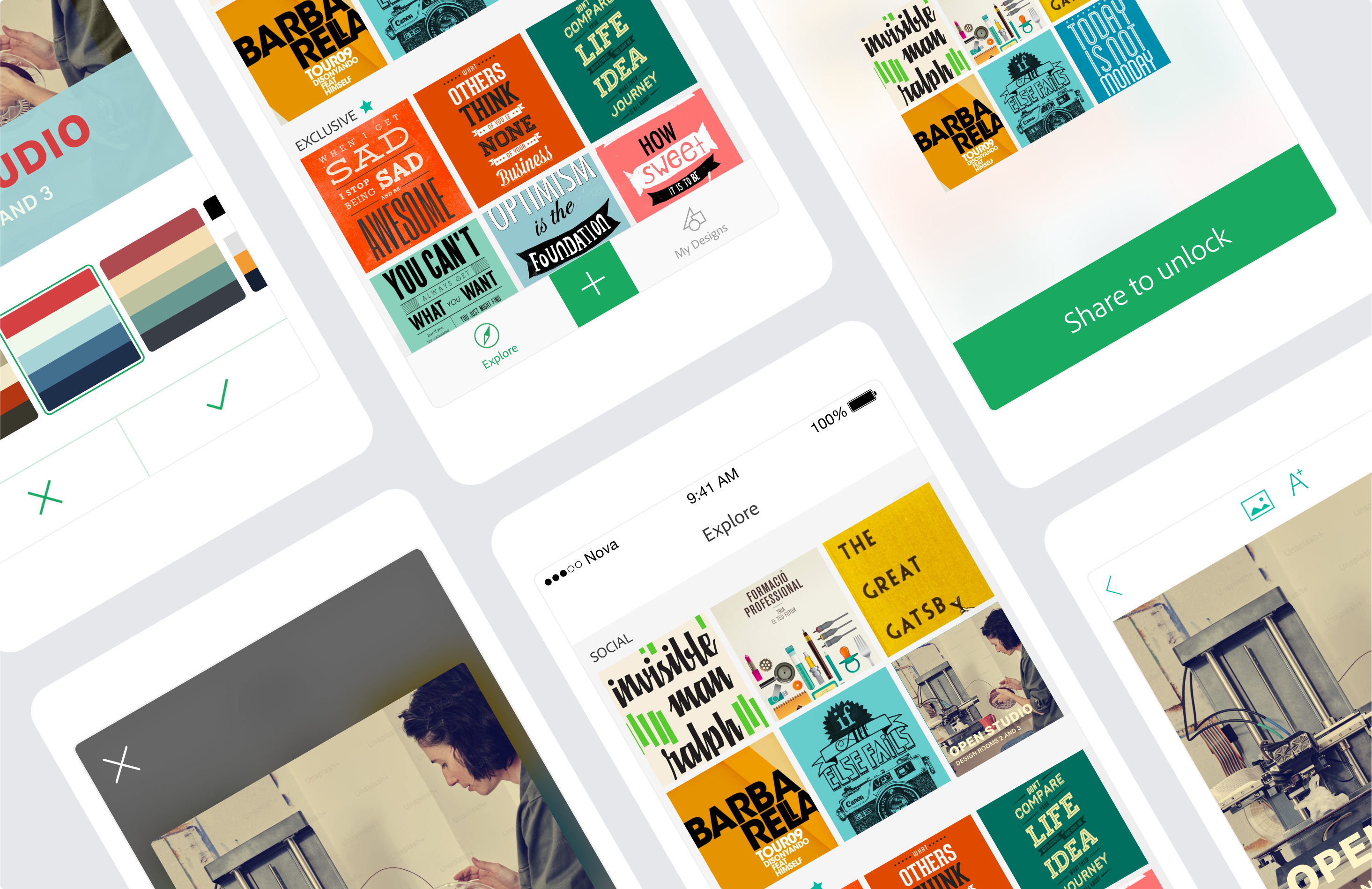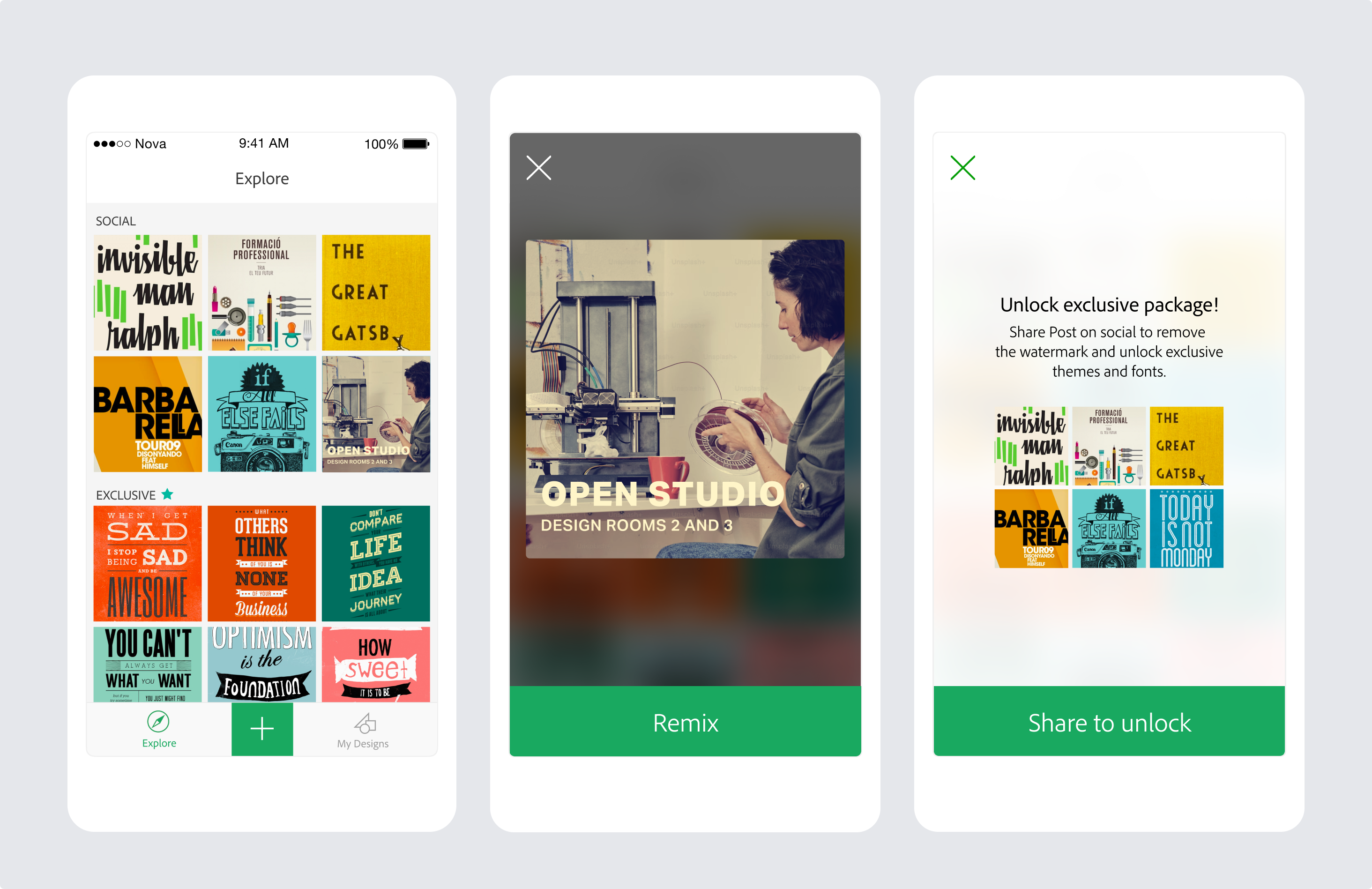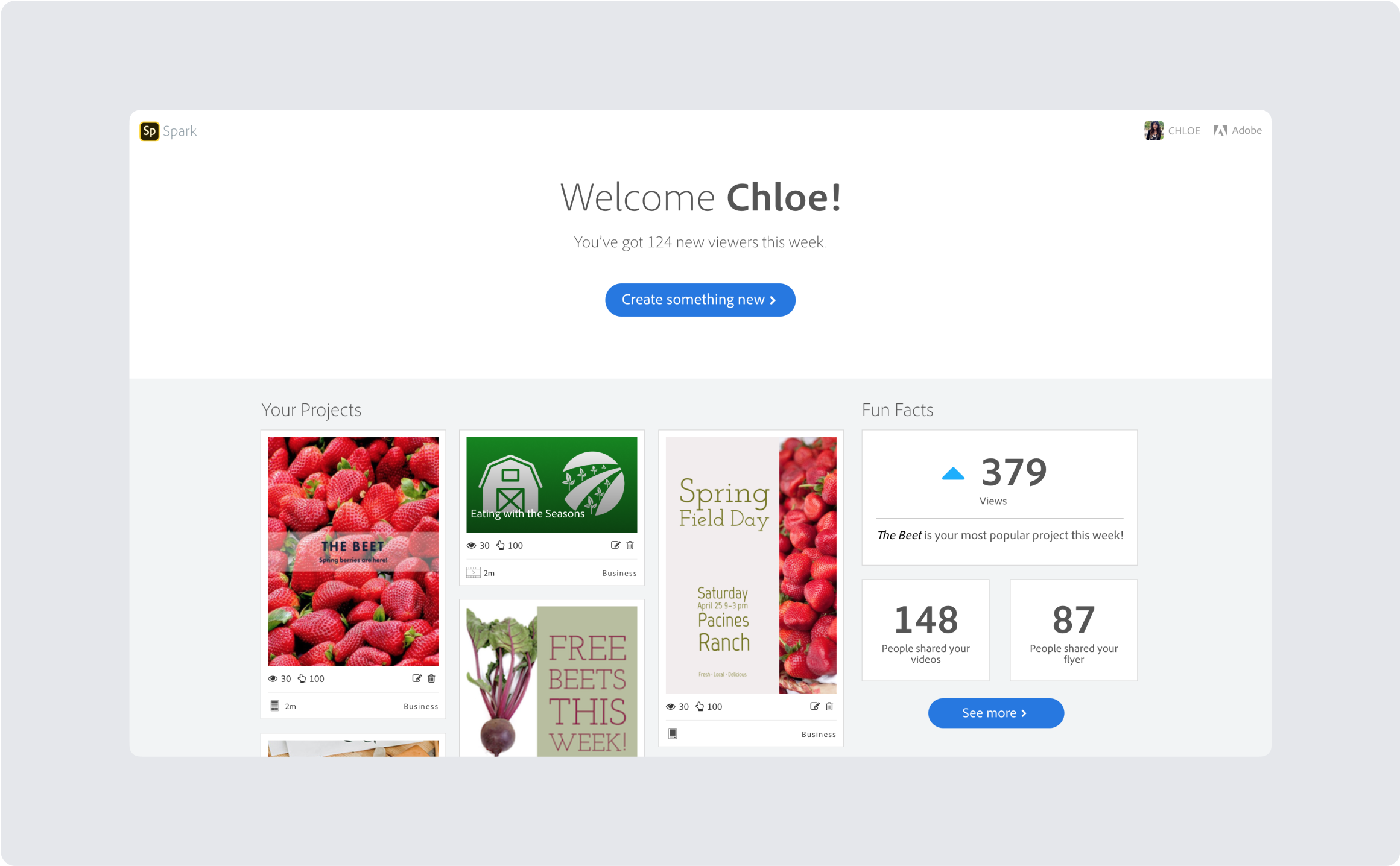Case study - Adobe
Adobe Express
At Adobe, we designed by building. I led design for Adobe Spark Post—the early version of what became Adobe Express. I created concepts, prototyped ideas, and coded demo after demo for exec buy-in toward launch. Today, Express is one of Adobe’s biggest products.

Learning from real users
Adobe wanted to reach the next-gen customer—someone not used to complex tools like Photoshop. The original hypothesis was that the product would be used for print collateral. But through user interviews that I ran, we discovered many more use cases, like creating graphics for social media and blogs. That insight helped us focus on a beachhead market that would expand and amplify our mission to democratize creativity.

One of our core tenants was avoiding the intimidating blank canvas. We focused on inspiring starting points, knowing the next-gen maker wasn’t a pro designer. You could simply remix what you saw.
Prototyping toward simplicity
We started with high-fidelity code prototypes, exploring interaction models until we landed on mobile patterns that felt simple and unintimidating. Embracing the mindset of “I’ll know it when I see it,” we offered remixable templates and smart suggestions—so anyone could create polished designs, regardless of experience.

We focused on progressive disclosure—surfacing suggestions at the right moment, starting with global changes and revealing more granular options as needed. Instead of a complex undo stack, we kept interactions simple with a clear accept/cancel model.
One of the most innovative and delightful features we introduced was the Discover wheel—a playful way for users to browse designs, inspired by the scroll experience of an old iPod.

We applied the same approach to local edits, using progressive disclosure to surface suggestions at the right moment. Once a user selected an element, we revealed context-aware options and smart recommendations.
A key principle in the IA and flow was continuity—carrying the post itself as the unifying element across screens. We used custom iOS animations to create seamless transitions between views and modes.
From app to platform
What started as a pilot I ran in a small classroom in Snoqualmie, Washington, grew into a platform used by over 43 million students—eventually going head-to-head with Canva. Within hours of launch, the app hit 200,000 downloads and earned a positive review from TechCrunch. While building the mobile experience, we also began shaping the broader vision for Adobe Express as a “design for all” platform, with a strong focus on education. Many of those early decisions still shape the product today.

Today’s design of Adobe Express still reflects the original patterns we explored and produced.